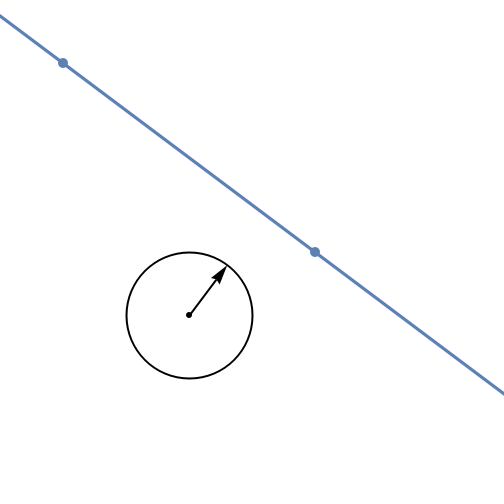Wolfram Function Repository
Instant-use add-on functions for the Wolfram Language
Function Repository Resource:
Get the Hessian normal form of a line passing through two given points on the Cartesian plane
ResourceFunction["HessianLine"][pts] returns the Hessian line for pts. |
Find the Hessian line through two points:
| In[1]:= |
| Out[1]= |
Show the plane, points, origin and normal vector:
| In[2]:= | ![Graphics[{{ColorData[97, 1], {AbsoluteThickness[1.6], Hyperplane[{3/5, 4/5}, 2]},
{AbsolutePointSize[5], Point[{{2, 1}, {-2, 4}}]}}, {Point[{0, 0}], Circle[{0, 0}, 1], Arrow[{{0, 0}, {3/5, 4/5}}]}}, PlotRange -> {{-3, 5}, {-3, 5}}]](https://www.wolframcloud.com/obj/resourcesystem/images/b43/b430d4ce-612d-49cb-94bc-7f4afa83ae2a/0788351b309cacc9.png) |
| Out[2]= |  |
Use HessianLine with symbolic arguments:
| In[3]:= |
| Out[3]= |
HessianPlane fails if the given points are identical:
| In[4]:= |
| Out[4]= |
Find the Hessian lines through four points:
| In[5]:= |
| Out[6]= |
The lines are distinct, so no three points are on a line:
| In[7]:= |
| Out[7]= |
Two of the lines have the same normal vector, so they are parallel:
| In[8]:= |
| Out[8]= |
This work is licensed under a Creative Commons Attribution 4.0 International License